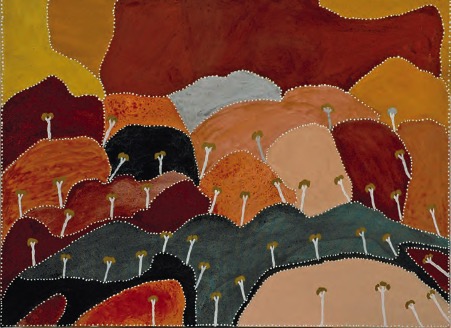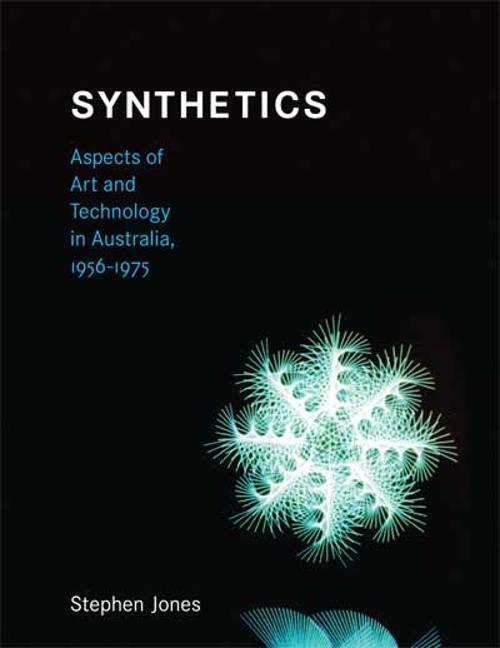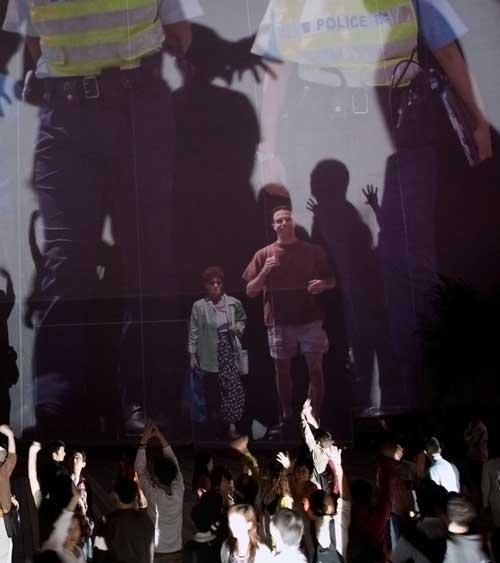
When three of our five Perth-based universities — John Curtin University of Technology, Murdoch University and Edith Cowan University — collaborate to show off their Indigenous art treasures, the result is outstanding. This large exhibition of 112 works would stand up to any state gallery show and suggests that despite sometimes dismal budgets, our educational institutions have been cleverly keeping pace with the flowering of Aboriginal art in Australia. A series of university art collection curators over the last decade or so have made canny choices to build coherent and comprehensive holdings, much of which is normally displayed in the offices and sometimes awkward public spaces of their institutions. Retired ECU collection curator Robert Vallis used to refer to himself as ‘Curator of Corridors’. Only John Curtin has a dedicated (and grand) gallery, others make do with library and foyer shows from time to time. Edith Cowan has been dynamic over the years in developing touring shows to get their works into the public sphere while Murdoch have been very generous and supportive in loaning their works to external exhibitions. Murdoch is the star of recent years in terms of the expansive vision and resources that they have dedicated to building a truly relevant contemporary collection. The growth of their collection, with the support of the University executive and a dedicated and high-end board, has been used as philosophical leverage to reflect the University’s desire and commitment to open minds (and hearts as well).
For Evolving Identities, three curators, Mark Stewart (Murdoch), Connie Petrillo (ECU) and Pauline Williams (John Curtin) have selected works that examine Indigenous art practice as “a vehicle for the survival and revival of culture”. I was delighted to walk into a dark screen space and find Tracey Moffat’s seminal video Night Cries which has lost none of its emotional punch and glorious artifice since it was created in 1990. To get there I passed by Moffat’s moving photolithographic series from 1994 Scarred for Life 1 where young people of indigenous backgrounds tell their demoralising stories of banal but life -changing daily events. All were acquired by John Curtin in the late nineties.
A whole room of urban-based Indigenous artists showed the scope of the universities’ acquisitions with photo-based series by Michael Riley, Brenda Croft, Ricky Maynard, Fiona Foley, Brooke Andrew and Darren Siwes. Nearby but in their own contexts, elegant etchings by Judy Watson and a tacky velvet over-paintings series by Tony Albert made subtle and bold statements respectively. Gordon Bennett and Julie Gough were represented with digital prints and silkscreens incorporating text spelling out past injustice and ongoing clichés. Almost all of these works were drawn from the Murdoch collection.
Edith Cowan showed strength in Kimberley works as well as Perth-based urban artists including Nyungar artists Shane Pickett, Norma McDonald and Lance Chadd. They have thoughtfully collected some stunning Kimberley works in ochre — Queenie, Rover, Billy Thomas, Beerbee Mungnari, George Wallaby, Paddy Carlton, Paddy Bedford and a great set of colour-saturated Balgo paintings. In fact more than one third of the show was by Western Australian artists with Curtin displaying a selection of those from the south west which includes Athol Farmer, Swag Taylor, Laurel Nannup, not to mention the family of artists — Sandra Hill and her talented sons Chris Pease and Ben Pushman.
There were few if any works from Arnhem Land or the Torres Strait, nothing in the way of sculpture or fibre works, (difficult choices for Collections but they do collect 3D work), yet the exhibition was complete and absorbing. It is accompanied by a publication. The contribution of donors is closely tied to the flourishing of Collections and there is a gang of Perth medical professionals whose love of Indigenous art extends to generous gestures. It should also be noted that many of the city-based artists from around Australia have undertaken residencies in Perth, and we are all so much richer for that.












